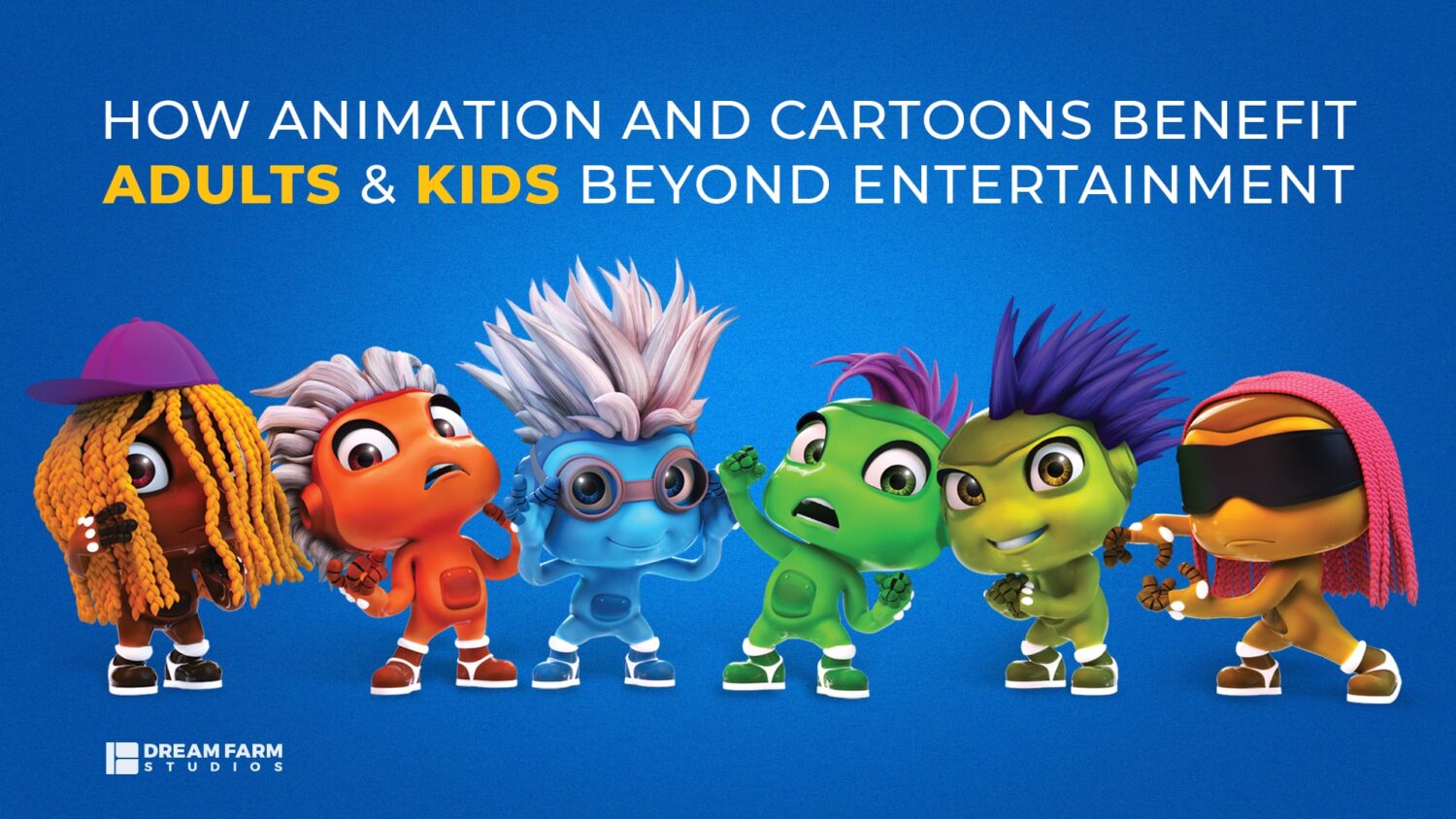Children spend around 6 hours a day watching TV and behind their computers or on smartphones, and when they’re really young, cartoons are the only source of entertainment for them.
Parents might put their kids behind a screen to take a break or finish a task. Plus, watching TV has proved to be a great way to get children to finish their meals. Sometimes, they happily sit down with their little ones and watch their favorite shows with them.
Because who’s really to say that animation and cartoons are only for kids?
Entertainment aside, there seems to be more to animation for viewers than moving pictures. It’s a limitless medium for imagination, after all, so how can it benefit kids and adults?
Brace yourself as we take a gentle stroll down ‘benefit avenue’ and answer some of the most-related questions to kids’ cartoons and screen time in this article.
Benefits of Animation for Kids
Before naming the benefits of animations and cartoons, let’s keep in mind that, first and foremost, it’s the family that shapes the child’s psychology. The cognitive, relational, educational, and psychological influence of school comes second. The environment and economic situation also contribute to how a child’s brain and mentality develop. Then comes the TV and other screens with bursts of light, fast color changes, and movements.
Watching cartoons inspire kids to dance and to talk in a new, imaginative language only known to them. It has been found that cartoons affect 78% of children, and more than half of them also change their behavior and language after watching animation.
Related article
Psychology of animated movies and cartoons for children and adults
It’s very important that the child receives positive messages and correctly adopts them.
They will take notes and learn what to do from cartoons; if the cartoon teaches good things like how to be nice to other people, love oneself, get interested in sports, aim high and believe in your dreams, or even personal hygiene or how to tie a rope, then they’re learning good things.
Moreover, people watch characters closely and could form biases about those in action movies or series. But cartoons make a sad or violent theme that children need to learn at some time or another less intimidating as animation, in general, can tenderize this effect as animated characters tend to make us feel like we’re them.
The following are some of the other benefits of animation for kids:
1. Learning Head Start
They’ll start learning at some point, right?
Younger children learn new sounds, shapes, languages, and colors with the help of cartoons. This positively benefits their cognitive abilities.
As a language teacher of 10+ years, I can’t think of a better way than Cartoon Network. Those students who watched this channel had a superior level of English language than others. That’s why I say:
Animation should be a staple in every classroom.
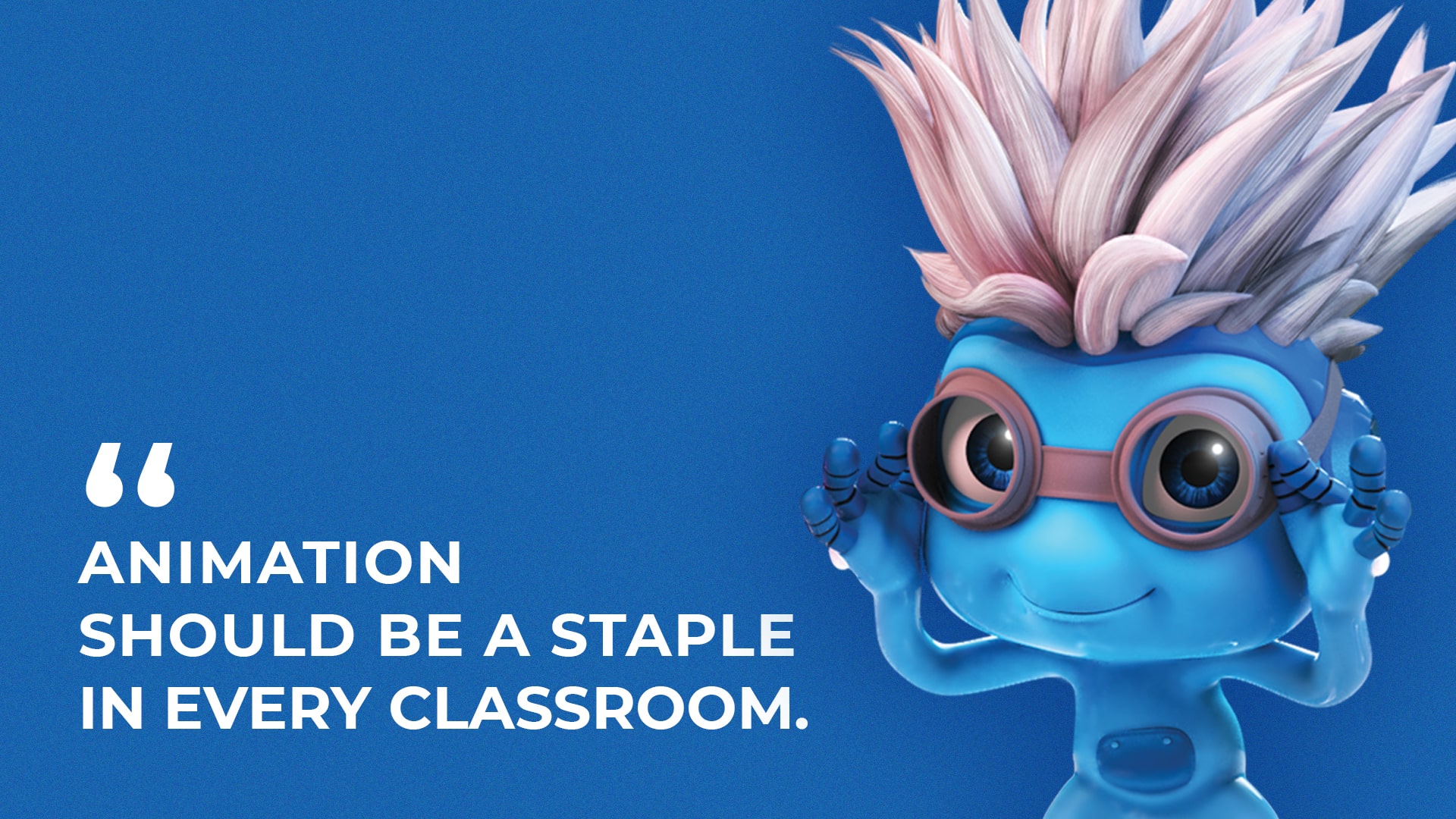
2. Brain Growth
Watching cartoons awakens children’s artistic side and drives them toward analytical thinking and problem-solving. Because stories have the power to make the context of problems more meaningful to learners.
Just like real-life movements, animation teaches kids that time exists and that life’s a sequence of transitions. It reminds them that physics has an effect on weight and direction in the universe and that nothing in the real world simply switches on and off. There’s always movement in between, sometimes in subtle ways.
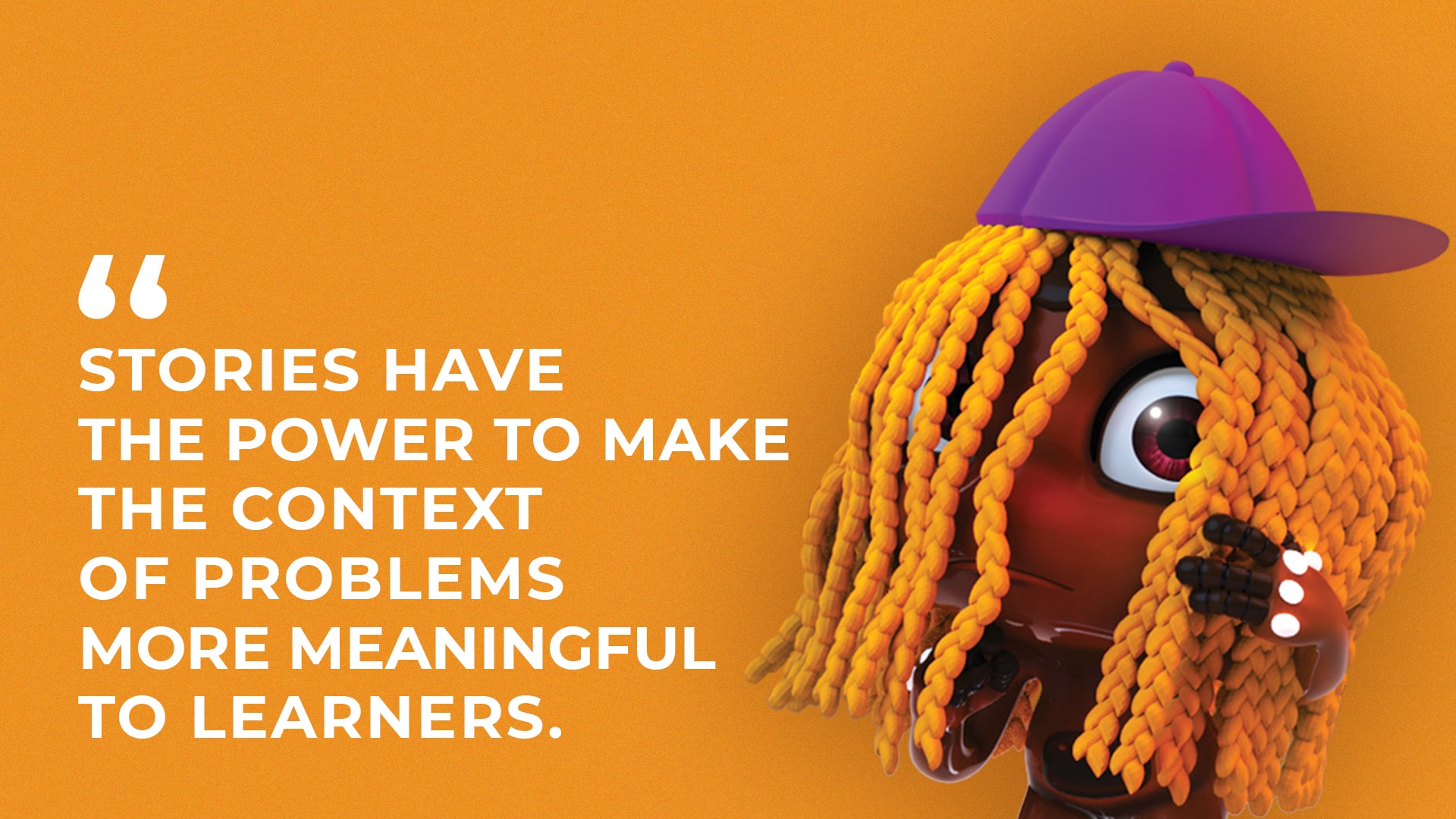
3. Improve Self-Confidence
Children get immersed in the worlds depicted in cartoons. Since most shows star heroic protagonists, kids’ brains are embedded with how they always find a way to overcome obstacles. Take Dory, for example; she’s a blue fish who can remember things only for as long as 30 seconds. However, her sheer determination to “keep swimming,” her positivity, optimism, magical and “different” way of seeing the world, and willingness to help others is something all kids, those with disabilities in particular, can learn from and keep moving forward in life.
4. Life Lessons
Yes yes. We’ve experienced plenty of ups and downs as adults, and the idea that animated movies “teach” us new life lessons might sound somewhat unlikely. But we forget the most trivial things.
We were told thousands of times to believe in ourselves, but Kung Fu Panda tells it with a lovely, round panda that everyone, especially children, wants to hear again. Or Watching Woody and Buzz’s friendship in Toy Story reminds us of our own friends and entice the feeling of checking on friends we’ve lost touch with while Wall-E jogs on our memories about the importance of taking care of our planet.
5. Motivate Students
With 40 percent of people responding better to visual information over text, infographics, and whiteboards can facilitate learning for students, hence motivating them to learn more. They provide a guided tour and keep the learners pinned throughout the video. Learners love whiteboard animation because, for them, it’s like when the teacher explains and writes on the board in real time.
What’s more, certain points can be highlighted with music, sound effects, and movement, something that can’t be done through plain text.
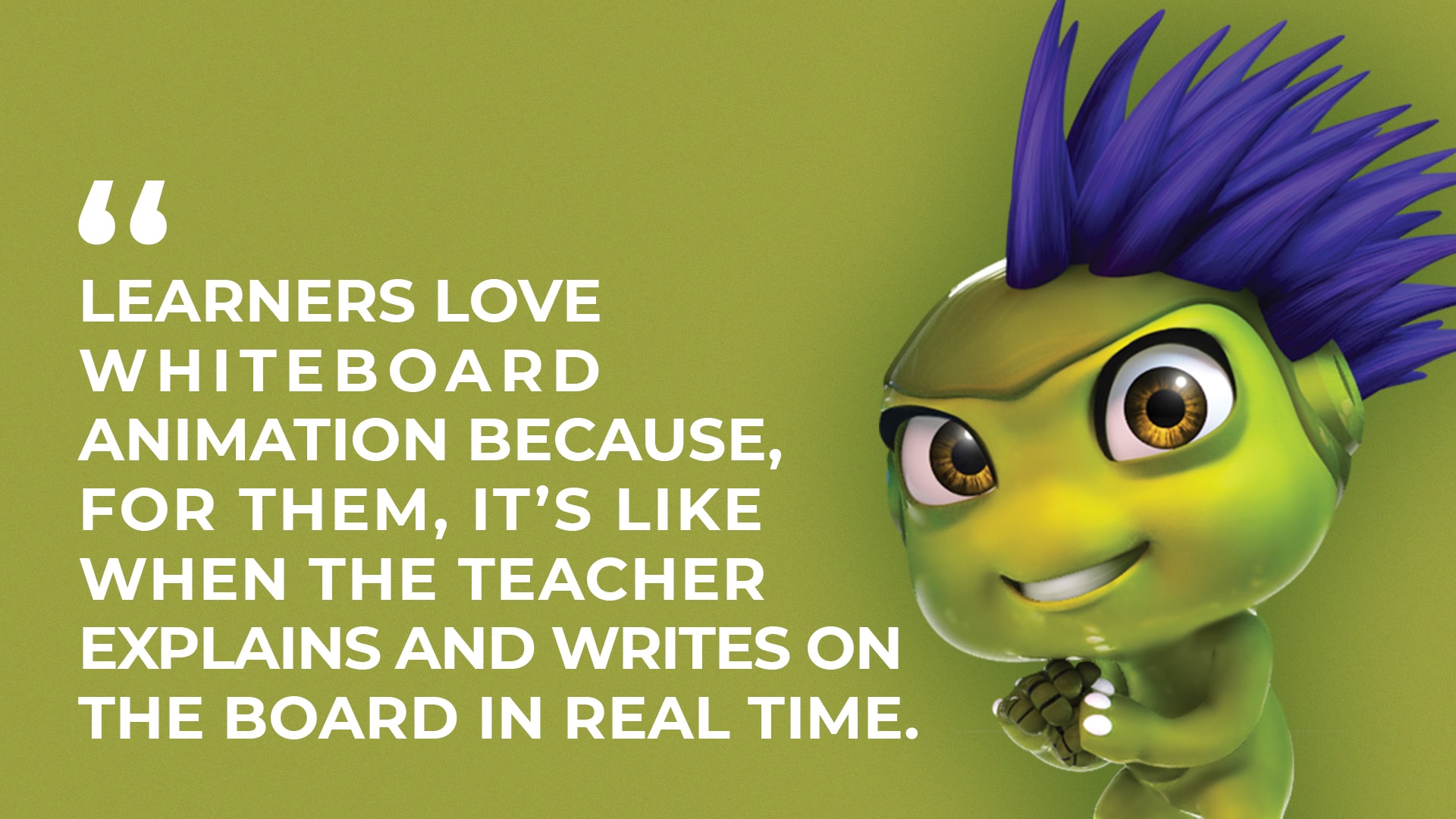
6. Role Models
Cartoons often feature characters who embody positive values, such as kindness, honesty, and respect. These characters can serve as role models for children and inspire them to adopt similar values in their own lives. Loved by many, especially girls, Elsa from Disney’s Frozen learns to embrace her powers and become a strong, confident queen who puts her kingdom and her loved ones first.
Benefits of Animation for Adults
With cable losing its viewers, streaming platforms have taken over the market of animated videos for adults, making them arguably the fastest-growing animation category. You might be surprised to find out how many adults watch Cartoon Network:
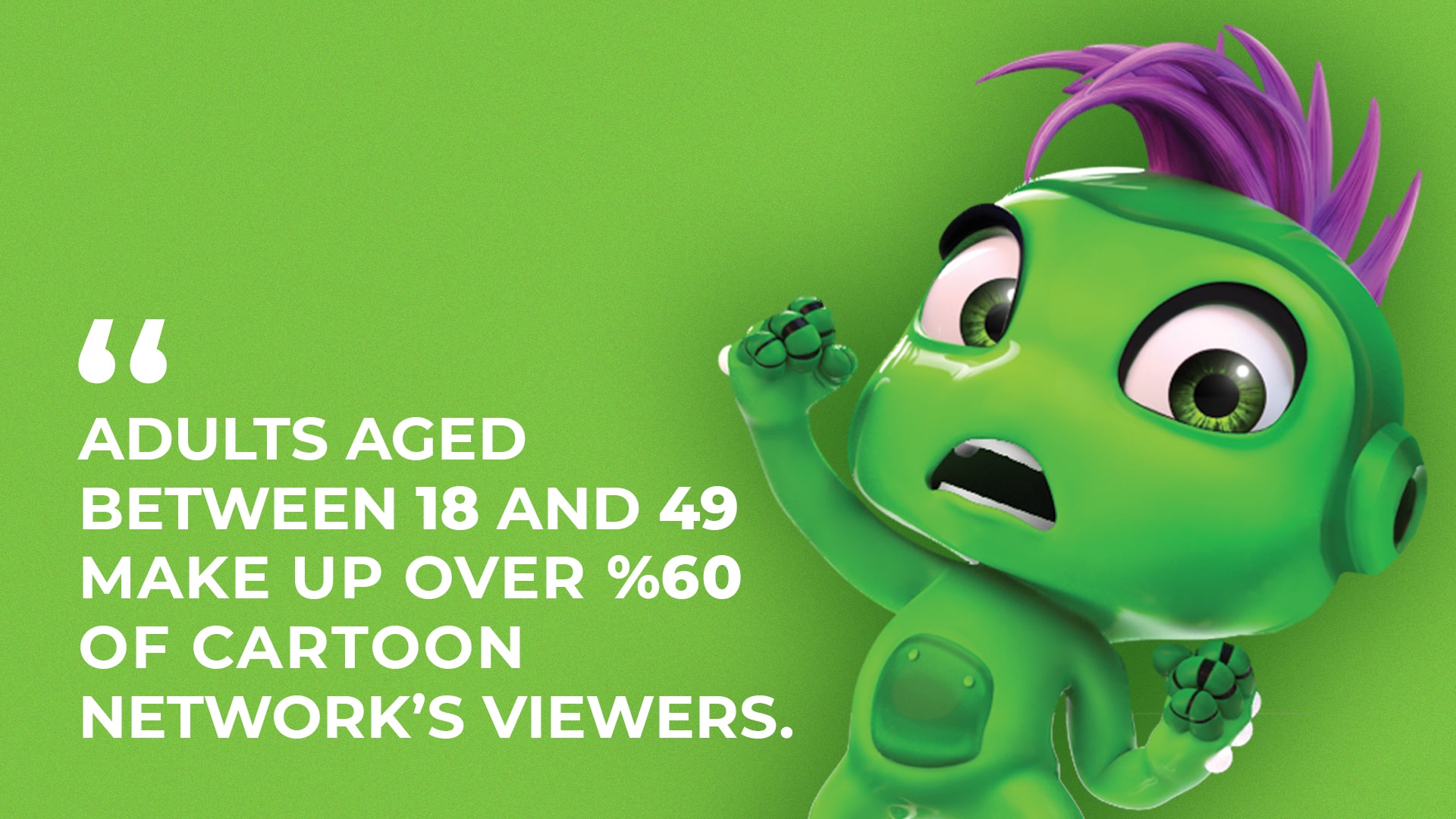
1. Stress Reliever
People watch movies and cartoons to get away from daily anxiety. Who can blame them? Animation’s an outlet for our emotions, and it’s great at taking the stress away and making us feel less lonely.
Plus, it’s commonly known that laughter has numerous positive effects on our bodies. One particular study suggests that laughter:
- Stimulates many organs
- Activates and relieves our stress response
- Soothes tension
- Improves our immune system
- Relieves pain
- Increases personal satisfaction
- Improves our mood
2. Creativity Boost
Due to its unlimited room for maneuvering and expressing complex ideas, animation encourages everyone to think outside the box. The arty types, animators, graphic designers, and casual viewers can all get new ideas and expand their imaginations to tell abstract stories. It introduces us to magical worlds and universes we never thought our imagination could travel to!

3. Relive Memories
Animated videos of any kind (animated ads, series, video game trailers, etc.) have the ability to elicit nostalgia because when we were kids, we spent most of our time watching cartoons and kids shows. So it’s a familiar sight to adults.
Now, all it takes is a second of the opening music of a show to take us back to those days and how it felt to be free of responsibilities, just watching cartoons! That aside, it’s in the nature of animated movies to incorporate nostalgic themes. Pixar Studios’ Inside Out is an excellent example of the emotions we experienced when we were younger, making it enjoyable for both kids and adults.
4. Marketing Miracle
When speaking of animation’s utility in marketing, it’s only mandatory to mention animated commercials and their unbelievable power to step up your marketing game. They can handle comprehensive topics, create a loyal customer base, and make a brand recognizable and memorable while being cost-effective and easy to share and edit.
The average American sees somewhere between 4,000-10,000 ads each day, and judging by the fact that we perceive 80% of information visually, marketers have shifted towards video material to get in on the fight for eyeballs. What’s more, SmartInsights says that animated content grabs consumers’ attention in less than 1/10th of a second!
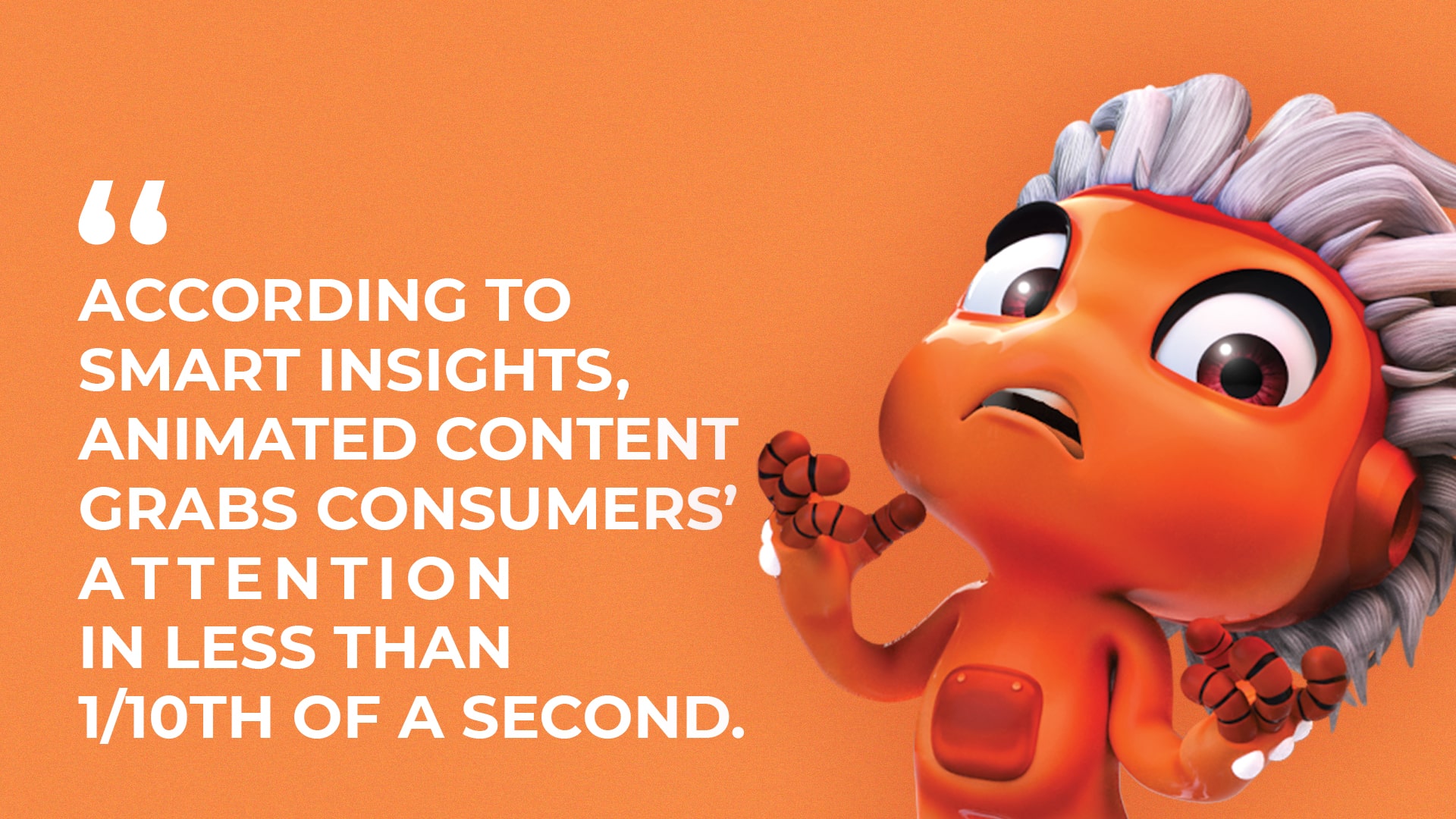
5. More Family Time
Sadly, the hectic life of adults drifts families apart. Watching something that the whole family can enjoy makes room for all the members to get with each other and spend some quality time with each other.
Here are some of the benefits of watching an animation or a family movie as a family:
- Encourages family bonding and communication: Watching TV as a family can lead to shared experiences and memories, as well as opportunities for parents to chat with their children about what they’re seeing. This can aid in the improvement of family connections and communication abilities.
- Improves empathy and emotional intelligence: Animated shows frequently feature characters with diverse backgrounds and personalities, which help develop empathy and emotional intelligence in both children and adults.
- Offers entertainment and relaxation: Viewing television as a family is a pleasant and relaxing way to unwind after a busy day or week.
- Educational gains: Many animated shows for kids teach them key lessons and abilities, including problem-solving, teamwork, and social skills.
Related Questions to Kids’ Safety and Screen Time (FAQs)
We’ve learned that the advantages of animation for kids and adults are many. However, it’s comprehensible some parents may be worried about the dangers of too much screen time. We hope this small section helps lessen their worries:
1. It provides kids with a basis for learning
2. It enhances their problem-solving techniques
3. It improves their self-confidence
4. It motivates students and learners
5. It teaches children valuable life lessons
6. It introduces them to positive role models
1. It relieves them from stress and anxiety
2. It helps with marketing
3. It gives them a creativity boost
4. It lets grown-ups relive old memories
5. It makes room for more family time
According to the Centers for Decease Control and Prevention, the appropriate amount of screen time for different age groups is as follows:
• 8-10 years old: 6 hours
• 11-14 years old: 9 hours
• 15-18 years old: 9 and 1/2 hours

Allen Rafiee
Allen is the Senior blog writer at Dream Farm Studios. In the five years he has been writing for startups and big companies, he challenged himself to learn all he could about digital marketing and finally became a key member of the Marcom team. When he's not doing all of that, you can find him teaching different languages, learning new recipes, and watching cool documentaries about, well, anything!

